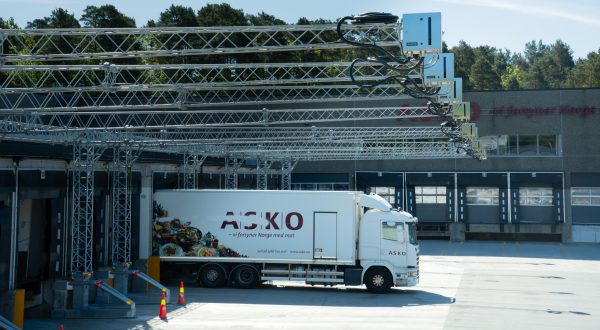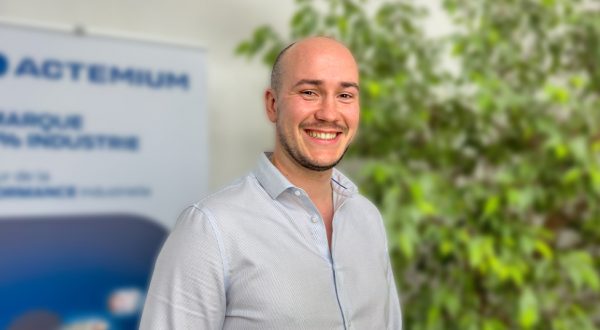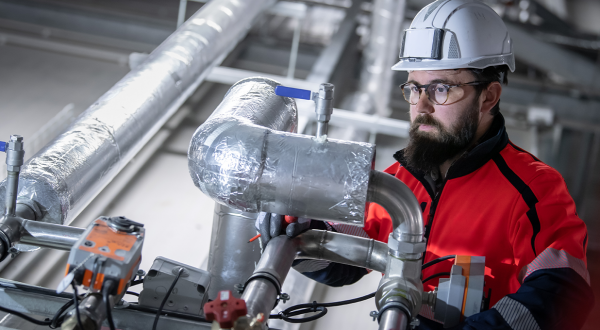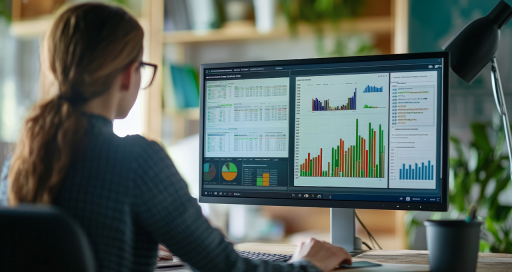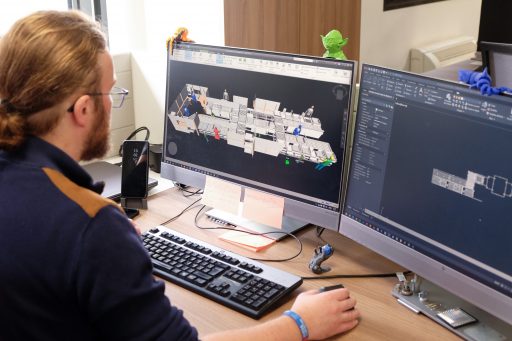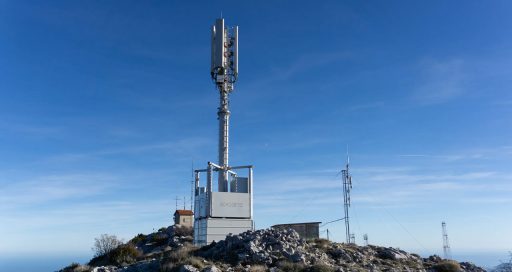Environmental and energy performance for the future digital control tower centre in Namur
Reading time: 6 min
In Belgium, a new building for Société wallonne des Aéroport (SOWAER) will accommodate its company headquarters alongside the digital control tower centre for the airports in Charleroi and Liège. Several VINCI Energies business units are involved in this project, which combines technological innovation with energy performance and climate considerations.
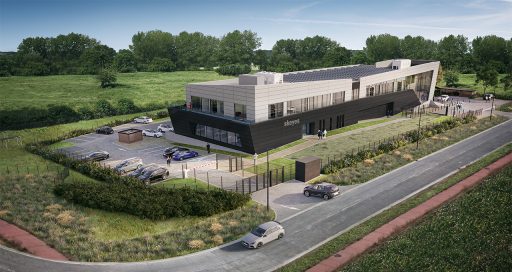
©Asymétrie Computer-Generated Image
Over the last 10 years, new technologies have made remote tower centres – remotely managed air traffic control towers – a high-performance alternative to conventional towers. Using cameras and sensors, air traffic controllers can manage aircraft at several airports simultaneously from their remote workstations.
Digital control towers offer numerous benefits, from economies of scale, flexibility and resilience to an improved overview of the air traffic situation thanks to augmented reality and infrared cameras.
In spring 2024, SOWAER began construction of its new company headquarters in Suarlée, near Namur in Belgium. This building, due to be handed over at the end of 2025, will look just like a conventional office complex, but in what will be a first for Belgium, will also house a digital control tower centre for the airports in Charleroi and Liège, equipped with everything it needs to function effectively.
Collaborative engineering
In partnership with the construction firm Thomas & Piron Bâtiment, and VINCI Facilities, which will provide maintenance of the installations for the building’s first five years in operation, Cegelec Electrical Solutions is playing a major role in this unusual project. “Our mission is to design and install the building’s electrical, HVAC and sanitation systems,” says Vincent Werner, Business Unit Manager at Cegelec Electrical Solutions.
“We worked in collaboration with the design consultants SIX Consulting & Engineering, which was responsible for the HVAC elements. We did all the design work for the electrical engineering side. Our engineering was important for the technical premises, which the architect designed according to our recommendations to ensure full redundancy in the electrical installations. It was decided to create a basement level throughout the entire building to accommodate all the technical (energy production) premises, as well as the two data rooms for the digital control tower [see box].”
Energy performance
Cegelec Electrical Solutions obtained this contract through a tender process, which it won with a perfect score in the “energy performance” category, with a commitment to achieving Level-3 certification for CO2 performance.
“The combination of different energy production techniques, each used when its output is highest.”
This took the form of a dozen different actions implemented on the project site, which included: a next-generation operational base (with heat pumps, double glazing, solar panels, etc.), no generators used in the early stages, a dual charging station for electric vehicles, battery packs, eco-driving training for manual workers, Climate Fresk training for the site team, and systematic sorting of all waste.
Zero fossil energy
Cegelec Electrical Solutions also faced the major challenge of powering all its construction equipment without using fossil energy. To meet SOWAER’s requirement to reduce the site’s CO2 emissions as much as possible, says Vincent Werner, Cegelec Electrical Solutions designed a solution featuring “The combination of different energy production techniques (geothermal, solar, air/water heat pumps), each used when its output is highest. This enabled us to achieve net-zero energy consumption, or -12,000 kg of CO2 emissions a year, when a building of this type generally emits 15,000 kg a year.”
Return on investment
Though more costly to begin with, the solution proposed by Cegelec Electrical Solutions offers a relatively quick return on investment. “This solution costs 2.4% more than a conventional solution,” explains the manager. “You need to invest around €400,000 more. But it means that the customer’s energy bill is reduced, no fossil energy is used, no CO2 is emitted, and progress is made toward carbon neutrality (which is mandatory in the EU from 2050). It also contributes directly to the climate change mitigation objectives.”
Three production chains for optimal redundancy
The solution designed by Cegelec Electrical Solutions had to work within the constraints of the airport sector and also the security requirements specified by the air traffic service provider Skeyes to ensure continuity in airport operations. The future SOWAER building is considered critical, so all electrical, heating and climate control systems must have full redundancy, with no possibility of a blackout.
“This redundancy applies to three production chains,” explains Vincent Werner, Business Unit Manager at Cegelec Electrical Solutions. “Chain A via a reversible air-air heat pump, Chain B via a reversible water-water heat pump coupled with a geothermal installation, and Chain C, the emergency backup, with a direct-expansion heat pump.” These three chains are managed through an electrical management system (EMS) capable of switching between chains as required.
“In addition, to safeguard technical operations as comprehensively as possible, a backup generator is being installed,” says Vincent Werner. “This would only be used in the event of a serious malfunction in our installations.” Electrical power for the two data rooms comes via UPS (uninterruptible power supply)* units fitted with 100 kVA batteries to ensure uninterrupted operation.
04/17/2025
*Device whose main function is to supply continuous and stable power to electrical and electronic appliances.
